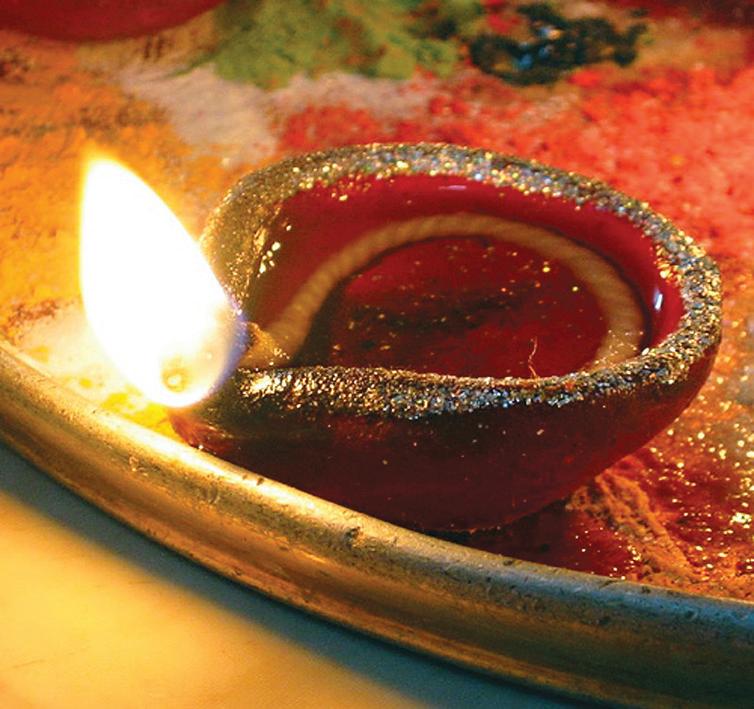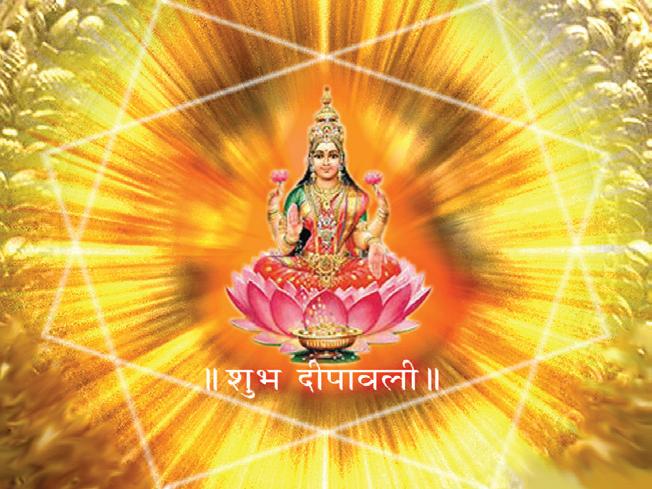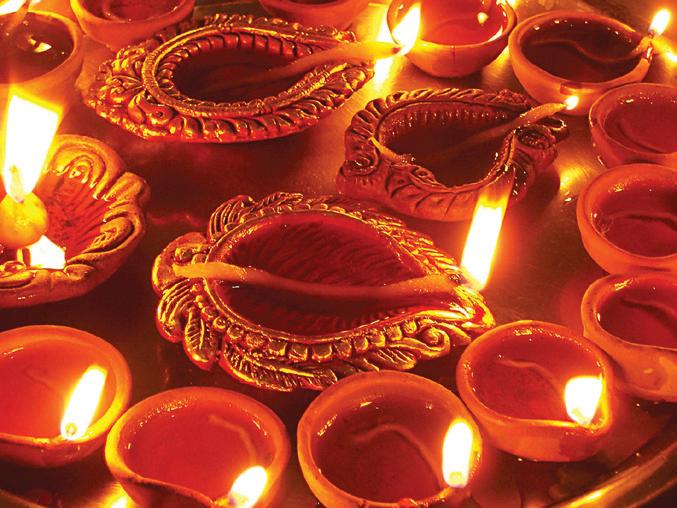
4 minute read
Celebrating light
from 2009-10 Sydney (1)
by Indian Link
It is no coincidence that the Hindu “festival of lights” falls at the end of October or early November on Amavasya - the darkest night of the year. It is a call to Indians everywhere, from Britain, Guyana, Fiji, Malaysia, Mauritius, Myanmar, to Singapore, Sri Lanka, Indonesia, Thailand, Africa and Australia, to light up their homes with rows and rows of earthen lamps or diyas to ward off the inauspicious darkness. As they bow to Maha Lakshmi, the goddess of abundance and prosperity and to Ganesha, the lord of new beginnings, on their lips is the potent Sanskrit chant Tamaso ma jyotir gamaya Lead us into the light - the ‘light’ being spiritual enlightenment, knowledge and self-awareness. On Diwali night, Hindus everywhere join in a battle against the dark forces of violence, hatred, ignorance and fear, the way Lord Rama battled demons many centuries ago.

Diwali is indeed a great unifier, believes Sydney-based Creative Copywriter, Rowena Pillay. It is a time to gather in faith, to reach out to members of one’s home, and extend this emotion to one’s community, nation and the world at large. Rowena cherishes fond childhood memories of celebrating Diwali in Durban, South Africa. “On Diwali day, mother always made generous sweet parcels for all our neighbours,” she remembers. “Throughout the day, the gesture would be returned with plates of sweets, dried fruit and savouries being dropped off at our house!”
For Amsha Rassiah who grew up in Malaysia, Diwali always meant a reaffirmation of filial bonds. “The grand Diwali lunch was always the highlight of the day. With a gathering of over 60 uncles, aunts, grandparents and miscellaneous cousins at our ancestral home in Kuala Lumpur, we had to hire caterers every year. But we always made it a point to be with family on Diwali day, even if it meant driving for six hours,” she recalls. At Diwali, every abode, no matter how humble, is tidied and prepared for a visit from the gods. “Cleanliness is next to godliness,” remembers Rowena. “Our small rented room with its kitchen and veranda was cleaned, scrubbed and polished until everything sparkled,” she says. ‘Otherwise,’ my mother would warn, ‘Lord Rama and Maha Lakshmi would not enter our home!’” leading up to Diwali are just as significant. On the eve of the big day, Amsha’s family who celebrate Diwali the South Indian way, would pray for their ancestors and as a mark of respect, eat only vegetarian food. Two days before Diwali, Rowena’s family who are originally from North India, would unpack their diyas and wash them with turmeric and warm water. Thin, long cotton wicks were then rolled out and kept ready for Diwali night. Adds Rowena, “On the night before Diwali, my mother would make a diya from flour and water, and fill it with enough ghee to burn all night outside our doorway. A stainless steel spoon was placed above this Jum ki diya to collect the pure soot that we girls used as kohl on Diwali day.”
Elaborate patterns of fine rice flour are drawn with a deft hand to adorn the entrance of the house. Among most Indian communities, tiny footprints are painted, leading from the doorway to the prayer room to represent the footsteps of goddess Lakshmi. Bunches of sacred mango leaves and marigolds are strung above main doors.
Traditionally, everyone receives new clothes and jewellery to be worn on Diwali to welcome the brand new year. On the eve of Diwali, Amsha’s mother would bless the children’s new clothes by daubing turmeric and vermilion on the insides.

On Diwali morning, everyone is up at the break of dawn for a compulsory cleansing oil massage followed by a shower. New clothes are donned and families gather to pray to Lakshmi the giver of plenty, the harbinger of health, wealth and happiness. Offerings of grains, fruit, sweets and silver are made. “But on Diwali, we humbly ask for faith, not money,” says Rowena. “We our spiritual lives, not a promotion at work.” After a visit to the family deity’s temple, a specially prepared breakfast is served. Classic Indian sweets like gulab jamun, burfi, jalebi, laddoos made in pure ghee, butter biscuits like nankhatai, and savouries like samosas, chevda, sev and nuts, prepared well in advance by mothers, grandmothers and aunts are passed around after being blessed at the pooja. The Diwali lunch in North India is purely vegetarian, usually a wholesome vegetable biryani, daal and spicy pickle. NonBrahmin South Indians like Amsha’s family, however, celebrate with varieties of meat preparations to symbolise plenty.
Diwali being a festival of wealth and prosperity also means inaugurations and purchases of expensive possessions, setting up new businesses, launching new projects, fixing wedding dates, even buying cars or jewellery. In Malaysia, Amsha says, “Hindus have adapted the Chinese custom of ‘Angpow’ where the elders give children money in the hope that the New Year will bring riches, both spiritual and monetary.”
Feasting and siestas done, dusk descends and the skies turn resplendent reflecting glittering light from hundreds of diyas that adorn every house. “Just before sunset my mother would say a special prayer with all the lamps, before they were lit and set out at various entrances,” says Rowena.
“Clay lamps were lined up along verandahs, on windowsills, along driveways, in gardens and courtyards. On terraces, lamps and candles were placed as far back from the ledge as possible so they didn’t die from the breeze and plunge the house into inauspicious darkness. All doors and windows would be left wide open to welcome the gods.
After that, fathers and uncles would prepare the courtyard for the much awaited fireworks display.” The lighting of firecrackers at Diwali celebrates the triumphant return of Rama to Ayodhya his kingdom, after vanquishing the demon king Ravana.




















